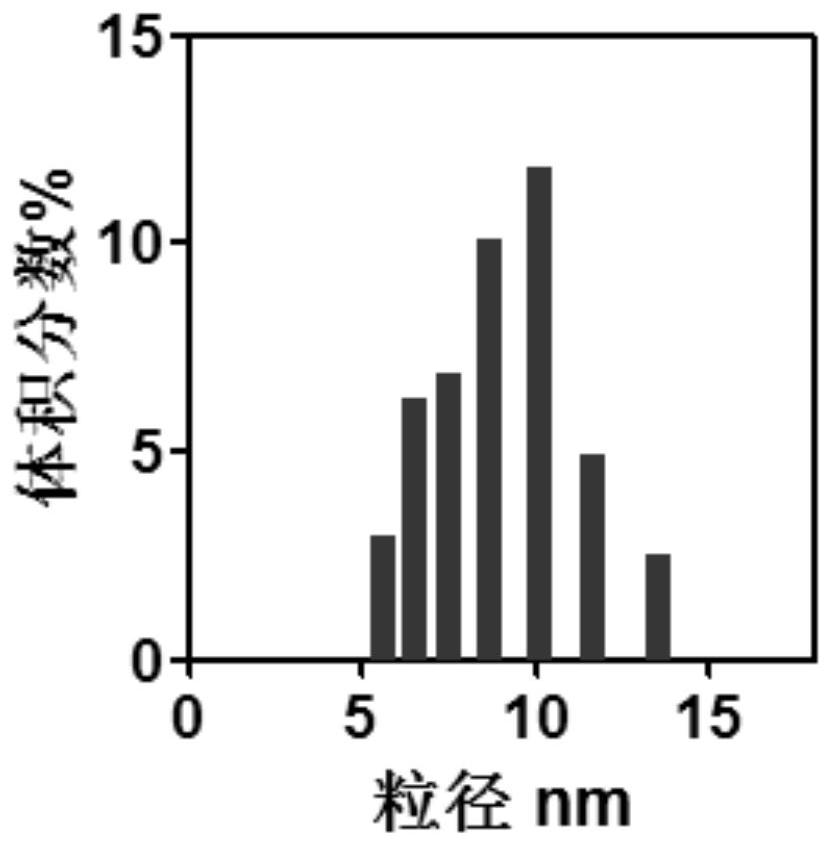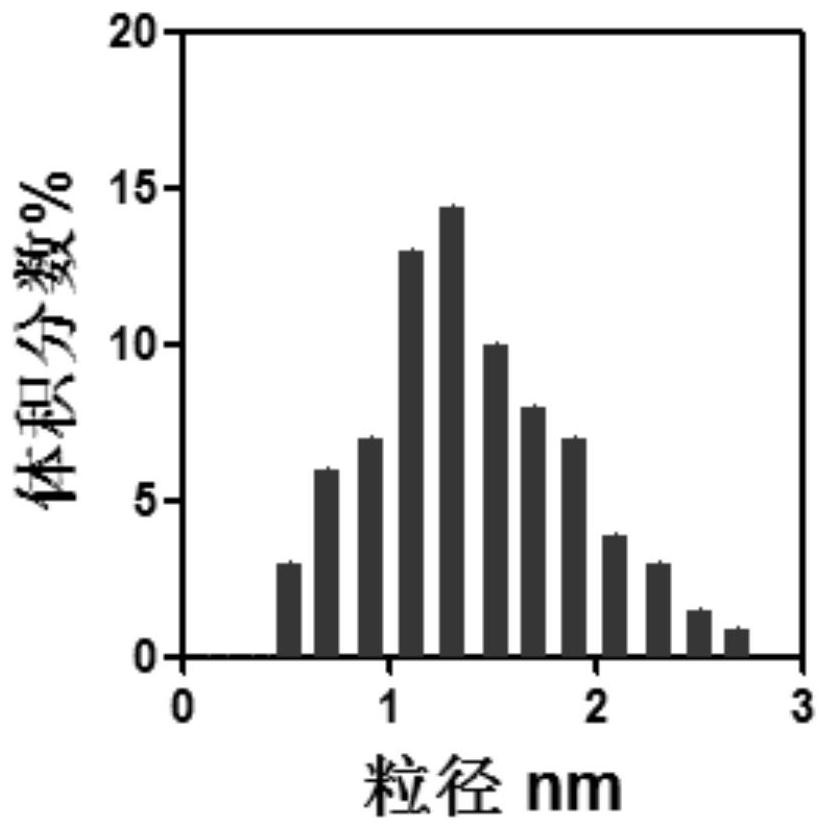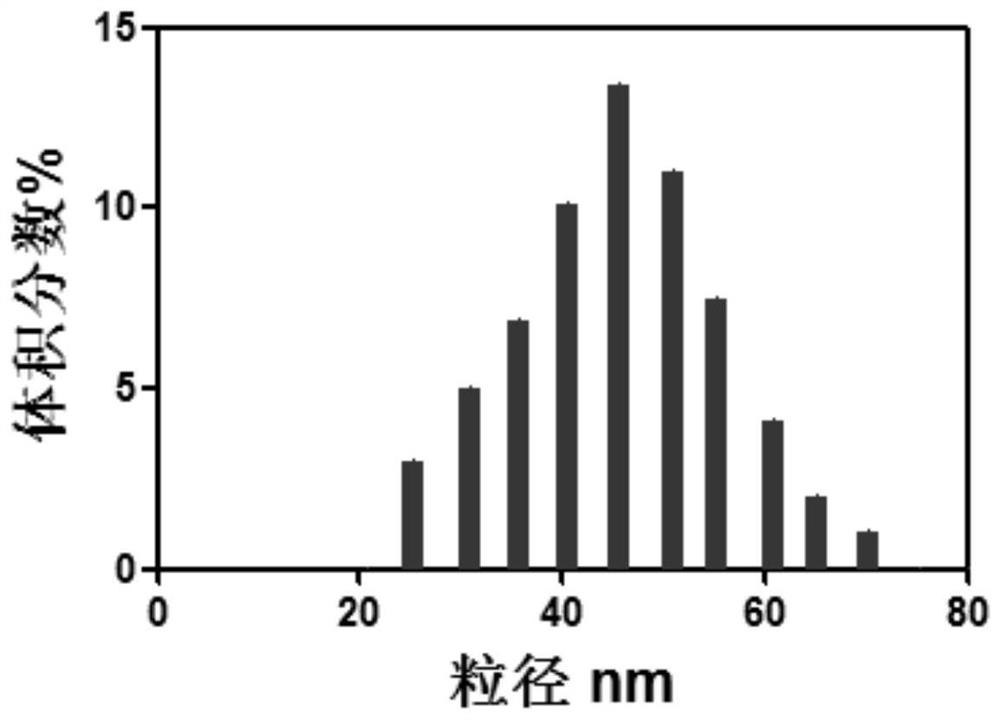A magnetic nanoparticle for imaging guidance and its preparation method
A technology of magnetic nanoparticles and alloy nanoparticles, applied in the field of biomedicine, can solve the problems of high relaxation rate of spherical particles to be discussed, and achieve the effect of increasing stability and not easy to fall off
- Summary
- Abstract
- Description
- Claims
- Application Information
AI Technical Summary
Problems solved by technology
Method used
Image
Examples
preparation example 1Fe3
[0047] Preparation Example 1Fe 3 o 4 Preparation of nanoparticles
[0048] FeSO 4 ·7H 2 O 4.2g and FeCl 3 ·6H 2 O 5.4g were respectively dissolved in 50mL water, shaken to fully dissolve the crystals, put the two solutions into the three-necked flask, shake and shake well, add ammonia water with a mass concentration of 30% in the dropping funnel, and fill the three-necked flask with nitrogen for 2 Minutes, under the protection of nitrogen, add ammonia water drop by drop to the reaction system until the pH of the system is about 12.0, stir vigorously in a water bath at 55°C for 50 minutes at a constant temperature, centrifuge after the reaction, remove the supernatant, and wash the precipitate repeatedly with distilled water To neutrality, pour off the supernatant, dry in vacuum at 65°C, and grind to obtain Fe 3 o 4 Nanoparticles.
[0049] For the prepared Fe 3 o 4 Nanoparticles were characterized, figure 1 Indicates Fe 3 o 4 The particle size distribution diagram ...
preparation example 2
[0050] Preparation example 2 Fe coated with mesoporous silica on the surface 3 o 4 Preparation of nanoparticles
[0051] The Fe that Preparation Example 1 obtains 3 o 4 Disperse 1mmol of nanoparticles in 100mL of 50°C aqueous solution, adjust the pH value to 9.0, add 10mL of tetraethyl orthosilicate and 25mL of ethyl acetate under stirring, stir for 10min to dissolve, then add 3-aminopropyl-triethoxy Silane 1.5mL, keep the temperature of the reaction solution at 65°C, stir the reaction for 24 hours, cool the product, centrifuge, and wash with ethanol 6 times to obtain the Fe powder coated with mesoporous silica. 3 o 4 Nanoparticles, dispersed in water for later use.
preparation example 3
[0052] Preparation Example 3 Preparation of gold nanoparticles
[0053] Lipoic acid was dissolved in deionized water to prepare a solution with a concentration of 0.1 mM, and HAuCl 4 ·3H 2 O crystals were dissolved in deionized water to prepare a solution with a concentration of 1 mM; the NaBH 4 Dissolve in deionized water to prepare a solution with a concentration of 0.1M. Take a glass vial and add 4mL ddH 2 After O, deoxygenate with nitrogen for 2min, then add lipoic acid aqueous solution (0.5mL, 0.1mM) and HAuCl 4 Aqueous solution (0.6mL, 1mM), after incubating at 37°C for 10min under ultrasonic conditions, add NaBH 4 solution (15 μL, 0.1 M), after ultrasonication for 20 min until the color of the solution changed from light yellow to purple, and stored at 4°C until use.
[0054] The prepared gold nanoparticles were characterized, and the results were as follows: figure 2 as shown, figure 2 It is the particle size distribution diagram of gold nanoparticles. It can ...
PUM
| Property | Measurement | Unit |
|---|---|---|
| particle diameter | aaaaa | aaaaa |
| particle diameter | aaaaa | aaaaa |
| particle diameter | aaaaa | aaaaa |
Abstract
Description
Claims
Application Information
 Login to View More
Login to View More - R&D
- Intellectual Property
- Life Sciences
- Materials
- Tech Scout
- Unparalleled Data Quality
- Higher Quality Content
- 60% Fewer Hallucinations
Browse by: Latest US Patents, China's latest patents, Technical Efficacy Thesaurus, Application Domain, Technology Topic, Popular Technical Reports.
© 2025 PatSnap. All rights reserved.Legal|Privacy policy|Modern Slavery Act Transparency Statement|Sitemap|About US| Contact US: help@patsnap.com



